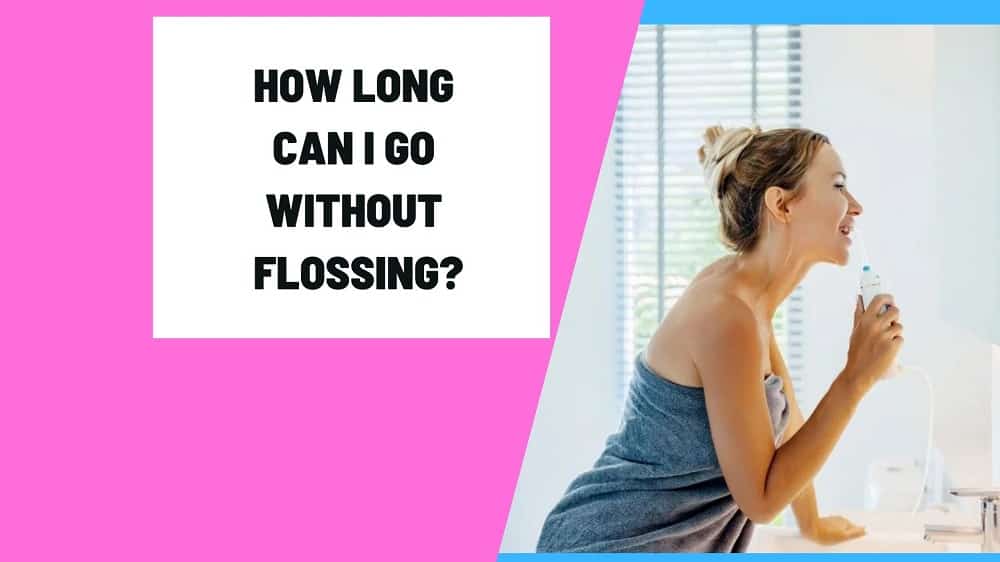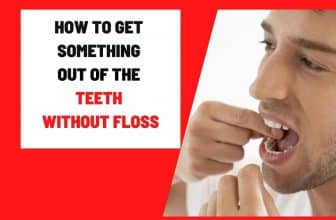
You should floss at least once a day. It’s cheap, easy, and doesn’t take much time. Don’t be concerned if you occasionally skip a day (or more) of flossing. If flossing is a hassle for you, you’re not alone.
Many people say it takes some time to get used to it, but it becomes easier with time. Flossing three times a week is preferable to not flossing at all!
If flossing causes gum bleeding, we suggest flossing it after every meal for 3-10 days until the bleeding stops.
Waterpik Cordless Water Flosser is an amazing device you should consider buying. The Waterpik Aquarius sells for $79.99 on Amazon.
Top 3 picks Waterpik Water Flosser
How long can you go without flossing?
You can go for A WEEK without flossing because after tha, plaque starts building up between your teeth, it will only get worse with time. Flossing will help keep your gums healthy and clean.
Do I have to floss daily?
If my teeth bleed should I stop flossing? Is an important issue that people ask. However, the answer is “No!” Bleeding is most likely a hint that you should clean your teeth more thoroughly rather than leaving them alone.
It is impossible to clean between teeth efficiently without floss or an adjacent teeth brush.
If you’ve never flossed previously, your gums may bleed the first few times you do.
The Bleeding might be caused by damaging gum inflammation, which is the beginning of gum disease.
Continue flossing softly, and the bleeding should cease in a week or two.
Why Is Flossing Beneficial?
The benefit of flossing shouldn’t be underestimated, even the most advanced toothbrush in the marketplace will not be able to penetrate the narrow crevices between your teeth properly.
Dental floss can reach and extract particles from cracks, fissures, and recesses.
If those particles are not removed, they build into plaque, leading to cavities, gum disease, foul breath, and tooth discoloration.
Furthermore, “the College of Dentistry at New York University determined that flossing dramatically reduces your chance of getting gum disease and cavities.”
Researchers tested more than 50 pairs of twins, encouraging one team to floss frequently while the other did not.
Gum bleeding decreased by approximately 40% after two weeks for twins who flossed. Gum bleeding is an indication of gingivitis or periodontal.
How and How Often, Should You Floss?
Use a light hand and also be careful yet gentle during flossing. Don’t try to shove the floss between your teeth.
Instead, make a “C” shape with the floss against a tooth, gently slip it into the gap through the gum and the tooth and push it up and back.
Repeat the technique for each tooth’s opposite side. Wash your mouth with cold water after flossing to eliminate debris. In an ideal world, you would floss after each meal to eliminate food particles sometime between your teeth, but it is unrealistic.
It can help if you floss at least once a day. It’s cheap, easy, and doesn’t take much time.
Don’t be concerned if you occasionally skip a day (or even more) of flossing. However, do your best to maintain this vital preventive maintenance action.
Your smiles (and your wallet) will be grateful.
What Happens When You Don’t Floss?
If you do not floss regularly, you are vulnerable to various diseases, and that is why your dentist advises you to perform it daily. These disadvantages of not flossing may make you reconsider skipping this essential component of your regimen.
Although the answer to “what happens if you don’t floss?” varies from person to person, it is never good. That’s why it’s critical to floss at least once a day—and maybe more if you’re snacking on popcorn.
When you don’t floss regularly, you will face these problems:
Not flossing for a week or two will not kill you, but your teeth will start to suffer.
- Plaque and Tartar Deposition:
- Gum Disease
- Bad Breath
- Teeth Loss
- Gum Recession
- Pneumonia
Other problems caused by not flossing include Alzheimer’s, brain abscess, diabetes, renal illness, ulcers, pregnancy troubles, and others.
You must maintain good oral health to lower your chances of having any of these dangerous disorders.
Brush your teeth two times a day for two or three minutes, rinse using mouthwash, and floss at least once per day, preferably at night, to remove food particles accumulated over the day.
When your mouth is full of germs, decayed teeth, and diseased gums, it becomes accessible to additional infections.
A cut on your cheeks, gums, or contact with other microorganisms can quickly lead to oral infections and abscesses in this sort of setting.
How to floss?
Because they do not even know the proper technique, some people skip flossing or give it up on their first attempt. Although flossing isn’t tricky, obtaining instruction and a demonstration from your dentists can help you feel more secure that you’re doing it correctly.
For essential flossing, follow these six steps:
- Wrap 45cm of thread around in one of your middle fingers, knot it to the other hand’s finger and then snap it off the dispenser. This is the typical length of the floss needed for one session.
- Gently place the floss between your teeth against one side, holding it between your thumb and index fingers. Move down the side of the teeth towards the gum line with a moderate side-to-side motion.
- When you reach your gum, carefully slip the floss beneath to clean the teeth ‘necks.’
- Clean the opposing tooth from the gums to the crown from side to side.
- Transfer the spent floss to your opposing middle finger and keep a new length across your fingertips for the next tooth.
- Steps 2 and 5 should be repeated to clean the remainder of your teeth.
- After becoming used to flossing, it should only take around 2 minutes to brush between your teeth. Reusing the same flossing length over various teeth might transmit germs throughout your mouth.
Top 3 picks Waterpik Water Flosser
When is the ideal time to floss your teeth?
Make flossing a habit by doing it after you clean your teeth. The Journal of Periodontology advocates flossing before brushing for the greatest outcomes because it removes material caught between teeth, making it simpler to brush them away.
This also maintains fluoride levels on tooth enamel after brushing.










